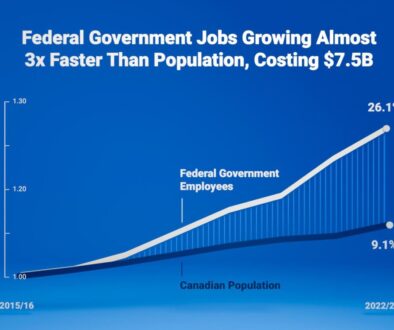The Ongoing Agenda: “15-Minute City”
In September 2015, 193 member states of the United Nations {UN}, including Canada, adopted the 2030 Agenda for Sustainable Development. The 2030 Agenda is a 15-year global framework with an ambitious set of 17 sustainable development goals, 169 targets, and over 230 indicators. According to the authors, the vision of the agenda is a secure world, free of poverty and hunger, with full and productive employment, access to quality education, universal health coverage, the achievement of gender equality, and an end to environmental degradation.

For this purpose, the Liberal government implemented Canada’s 2030 Agenda National strategy.
https://www.canada.ca/en/employment-social-development/programs/agenda-2030/national-strategy.html
Part of the agenda is also a concept of the Smart City and within that a 15-minute city as a residential concept to ensure that urban residents can fulfill six “essential” functions: living, working, commerce, healthcare, education, and entertainment within 15 minutes by bike or walking. The framework of this model has four components: density, proximity, diversity, and digitalization. The purpose is to reduce car dependency, promote healthy and sustainable living, and overall improve the quality of life for city dwellers.

Photo source: www.securitymagazine.com
This concept was approved by the World Economic Forum {WEF}. The architect of this concept, Prof. Carlos Moreno wrote: “Regarding proximity dimensions, digitalization has been effective, as highlighted through the Smart City concept, where services such as online shopping, cashless transactions, and virtual communications and interactions amongst others are implemented and promoted. The similar availability of such services within 15-minute cities would reduce the need for commuting as some services could be delivered within the comfort of homes or offices. Coupling these with technologies such as smart contracts through Blockchain technology would help to ease security concerns, especially in regard to virtual payments. Digitalization, especially during this period of the COVID-19 “pandemic”, has made it possible for people to work from home and communicate virtually, and this has also been instrumental in reducing social contact and reducing the need to travel from home to offices and other workplaces. This dimension of proximity-based planning is already emerging from the pandemic and will be expected to stay in the post-pandemic urban jargon.”
https://www.mdpi.com/2624-6511/4/1/6
To encourage municipalities, and local governments around the country, Trudeau’s cabinet brought a new community support program: “Smart City Challenge”. The challenge empowers communities to adopt a smart cities approach to improve the lives of their residents through innovation, data, and collected technology. The program was introduced in 2018 and finalized in 2019, where thirteen “professionals” decided who got a $5 million, $10 million, and $50 million price. $50 million was awarded to Montreal, of course. For the applicants see the link below.
https://www.infrastructure.gc.ca/sc-vi/map-applications.php
Canadian Security Intelligence Service {CSIS} has concerns about national security because of smart cities. According to CSIS:” Smart cities represent the next generation of critical infrastructure, underpinning nearly all aspects of daily life. This integrated centrality means that smart cities will be attractive targets of hostile state actors and criminals for espionage and sabotage/disruption. Smart cities will collect and operate by processing huge volumes of personal and corporate data produced through interactions with, and usage of, smart infrastructure. This data can provide valuable insights for threat actors, including profiles and patterns of life of Canadians. In the hands of a threat actor, this data can be exploited to enable activities that compromise the safety and security of Canadians (e.g. espionage, foreign interference) and Canadian critical infrastructure. Connecting different critical infrastructure systems via telecommunication networks increases both the ‘attack surface’ and the potential scale of impact (i.e. access to or disruption of one infrastructure system could have spillover effects on other systems).”
https://freeshuswap.com/salmon-arm-smart-city/
There are other issues related to smart cities and the concept of 15-minute cities. Every city will be divided into “15-minute” blocks, and every person will be monitored by smartphones, credit cards with smart chips, electric cars, thousands of street cameras, drones, robots, satellites, and other technologies, for example, by nanoparticles in “vaccines”, as some people believe. It is also necessary to mention, that if people could freely leave those “15-minute” blocks, and if so, under what kind of conditions. What will apply to a person, who refuses to accept the smart city rules, or let’s say “restrictions”?
Some experts warn, that people within these blocks, will be almost 100% dependent on the food supply chain, regulated by the federal, provincial, or local government.
For the past few years, the Canadian government has clearly shown that behind the nice-sweet words is an agenda, that is against the people of this country and their rights and freedoms, which was proven by all “pandemic” lockdowns, and still ongoing mandates and restrictions.
DB




Ellen
June 12, 2023 @ 10:44 am
The sdgs were signed onto by the harper government and implemented again just before harper left office and trudeau took over.this is why trudeau won and the torch was passed.as for the WEF they sdgs were adopted by them since they were the millennium development goals as far back as 2008.between the sdgs and and also the paris accord which the WEF pushes.just look up the sdgs and the great reset.in june 2019 the UN/WEF partnered together to strategically accelerate the sdgs.